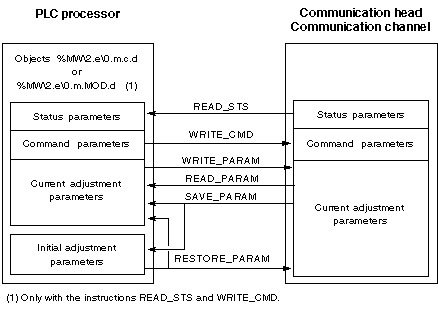Explicit exchanges are exchanges performed at the user program's request, and using instructions:
These exchanges apply to a set of %MW objects of the same type (status, commands or parameters) that belong to a channel.
NOTE: These objects provide information about the module (e.g., type of channel fault, etc.), and are used to control the modules and to define their operating modes (saving and restoring currently applied adjustment parameters).
General Principle For Using Explicit Instructions
The diagram below shows the different types of explicit exchanges that can be made between the processor and module.
During an explicit exchange, it is necessary to check its performance in order that data is only taken into account when the exchange has been correctly executed.
To do this, two types of information are available:
The following diagram describes the management principle for an exchange:
NOTE: In order to avoid several simultaneous explicit exchanges for the same channel, it is necessary to test the value of the word EXCH_STS (%MWr.m.c.0) of the IODDT associated to the channel before to call any EF using this channel.

